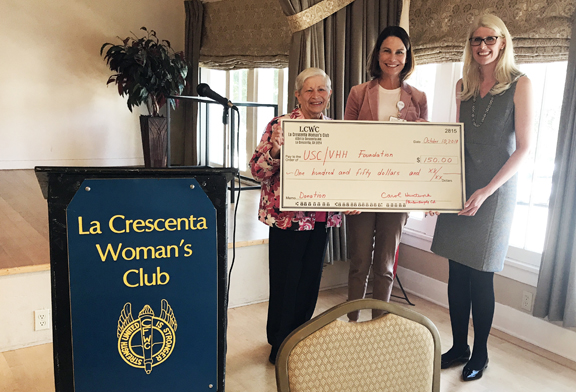
By Mary O’KEEFE
October is Breast Cancer Awareness Month. Though all medical experts don’t agree as to how often a person should have a mammogram, all agree that regular mammograms are an important part of a healthy regimen. Stories are too common of women who found a lump in their breasts and delayed going to the doctor only to discover later that the lump was cancer.
Aside from some types of skin cancer, breast cancer is the most common cancer in women in the United States, regardless of race or ethnicity. Breast cancer is the most common cause of death among Hispanic women, and it is the second most common cause of death among white, black, Asian/Pacific Islander and American Indian/Alaska Native women, according to the Centers for Disease Control and Prevention.
“The average for women who don’t have a strong [breast cancer history] or gene mutation is 12%, which factors to one in eight women who will have a diagnosis [of breast cancer],” said Marie Nelson MD, breast surgical oncologist, asst. professor of clinical surgery at the Keck School of Medicine at USC and associate program director of Breast Fellowship Program.
Women who have no family history of breast cancer should continue to get yearly mammograms starting at age 40 according to Nelson. Women who have mothers or sisters who have had breast cancer would be categorized as a higher risk and should begin getting mammograms at age 30, Nelson said.
The American Cancer Society, American College of Radiology, Society of Breast Imaging and United States Preventive Services Task Force all vary in their recommendations of mammogram frequency. These differing opinions have led to confusion not only among women but also among their physicians.
According to UCLA Radiology, Los Angeles, despite the different recommendations all organizations agree that yearly screening mammograms save the most lives.
To help make it a little easier on the budget, USC-VHH is offering mammograms for
$99 during the month of October.
“That is paying for the actual mammogram picture and interpretation,” Nelson said.
She added for those women who are in the age range for annual mammograms, it is vitally important to stay on schedule and not skip a year.
“I hear, ‘I went for five years and they found nothing so I took the next five off.’ It is the year-to-year changes that [are valuable to see],” Nelson said. “For early survival, early detection is the key.”
The value of getting mammograms each year is the woman, or man, is setting a frame of reference for the doctor.
“The value is you have comparison every year,” Nelson said. This allows doctors to see even the smallest change.
As technology advances, USC-VHH continues to embrace these new advances and brings them to the community hospital. USC Verdugo Hills Hospital is awaiting a 3D mammogram imaging system. The space has been prepared already for the machine.
“My hope is in a few month we will have that [system] on campus,” she said. “This is the very latest technology for a mammogram and is very useful, especially with dense breast tissue and for women at higher risk. It is capturing a series of pictures across the breast instead of a static picture.”
This system will see the subtle changes in the breast and would detect cancer earlier.
“Another benefit is that it will reduce call-backs. Many times, if there is a question from the first examination, the [patient] will be called back,” Nelson said. “The 3D will reduce call-back and provide huge piece of mind and comfort.”
According to VeryWell Health, ultimately every woman is unique and, as such, requires an individualized approach to determine when a mammogram is most appropriate. As with any medical decision, it is important for people to meet with their own physician to discuss their specific situation.
